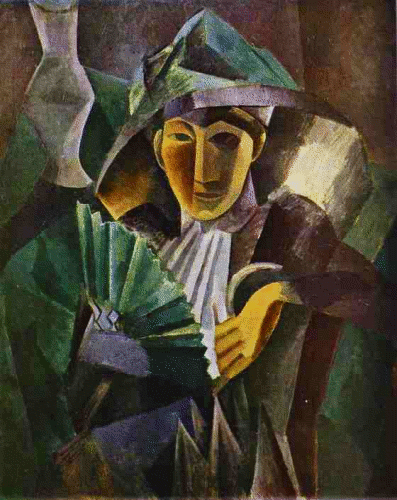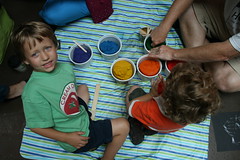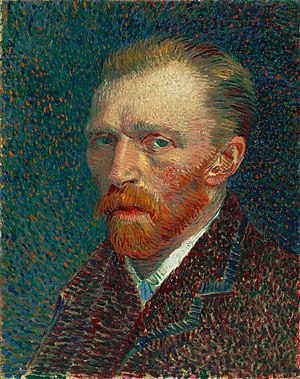Art classes for children & adults by Meena Chopra at Lakeshore/Clarkson Mississauga
Join ART CLASSES on Lakeshore/Clarkson.
Drawing, Colouring, Water Colours, Crayons, Pastels, Oil Painting.
Call: 905 819 8142
Call: 905 819 8142
Art is essential in expanding the horizons of children beyond everyday life. Children that are exposed to art early, are known to do better and go further in life as art creates an inner connection within the child to its outer environment.
Wednesday, November 20, 2013
Saturday, November 16, 2013
The Importance of Art in Child Development . Music & Arts . Education
By Grace Hwang Lynch: The Importance of Art in Child Development . Music & Arts . Education
In recent years, school curricula in the United States have shifted heavily toward common core subjects of reading and math, but what about the arts? Although some may regard art education as a luxury, simple creative activities are some of the building blocks of child development. Learning to create and appreciate visual aesthetics may be more important than ever to the development of the next generation of children as they grow up.
Developmental Benefits of Art
Motor Skills: Many of the motions involved in making art, such as holding a paintbrush or scribbling with a crayon, are essential to the growth of fine motor skills in young children. According to the National Institutes of Health, developmental milestones around age three should include drawing a circle and beginning to use safety scissors. Around age four, children may be able to draw a square and begin cutting straight lines with scissors. Many preschool programs emphasize the use of scissors because it develops the dexterity children will need for writing.
Art House for Kids: Call Meena Chopra 905 819 8142 for Art Classes
| Skulls for Kids at Quirk Gallery (Photo credit: Noah Scalin) |
Developmental Benefits of Art
Motor Skills: Many of the motions involved in making art, such as holding a paintbrush or scribbling with a crayon, are essential to the growth of fine motor skills in young children. According to the National Institutes of Health, developmental milestones around age three should include drawing a circle and beginning to use safety scissors. Around age four, children may be able to draw a square and begin cutting straight lines with scissors. Many preschool programs emphasize the use of scissors because it develops the dexterity children will need for writing.
Decision Making: According to a report by Americans for the Arts, art education strengthens problem-solving and critical-thinking skills. The experience of making decisions and choices in the course of creating art carries over into other parts of life. “If they are exploring and thinking and experimenting and trying new ideas, then creativity has a chance to blossom,” says MaryAnn Kohl, an arts educator and author of numerous books about children’s art education.
Visual Learning: Drawing, sculpting with clay and threading beads on a string all develop visual-spatial skills, which are more important than ever. Even toddlers know how to operate a smart phone or tablet, which means that even before they can read, kids are taking in visual information. This information consists of cues that we get from pictures or three-dimensional objects from digital media, books and television.
“Parents need to be aware that children learn a lot more from graphic sources now than in the past,” says Dr. Kerry Freedman, Head of Art and Design Education at Northern Illinois University. “Children need to know more about the world than just what they can learn through text and numbers. Art education teaches students how to interpret, criticize, and use visual information, and how to make choices based on it.” Knowledge about the visual arts, such as graphic symbolism, is especially important in helping kids become smart consumers and navigate a world filled with marketing logos.
Inventiveness: When kids are encouraged to express themselves and take risks in creating art, they develop a sense of innovation that will be important in their adult lives. “The kind of people society needs to make it move forward are thinking, inventive people who seek new ways and improvements, not people who can only follow directions,” says Kohl. “Art is a way to encourage the process and the experience of thinking and making things better!”
Cultural Awareness: As we live in an increasingly diverse society, the images of different groups in the media may also present mixed messages. “If a child is playing with a toy that suggests a racist or sexist meaning, part of that meaning develops because of the aesthetics of the toy—the color, shape, texture of the hair,” says Freedman. Teaching children to recognize the choices an artist or designer makes in portraying a subject helps kids understand the concept that what they see may be someone’s interpretation of reality.
Improved Academic Performance: Studies show that there is a correlation between art and other achievement. A report by Americans for the Arts states that young people who participate regularly in the arts (three hours a day on three days each week through one full year) are four times more likely to be recognized for academic achievement, to participate in a math and science fair or to win an award for writing an essay or poem than children who do not participate
Read More: The Importance of Art in Child Development . Music & Arts . Education Art House for Kids: Call Meena Chopra 905 819 8142 for Art Classes
Related articles
Tuesday, January 1, 2013
Sunday, December 9, 2012
Art and its incredible effects on mind - An insight
Art and its incredible effects on mind - An insight
Author: Meena Chopra(Author, Artist Educator)
Art House for Kids-Art as healer
has always improved the quality of life and mind giving a third dimension to
the human personality in many ways. Art as a
medium to explore life within and without has always given immense enjoyment to
human mind from ages.
.
Many of the most famous pieces in the Pop art movement have utilized popular
advertisements that could be easily tied to past memories. Pop art is known
very well for its use of bright, vibrant colours.
Author: Meena Chopra(Author, Artist Educator)
| Pop art sculpture (Photo credit: paulafunnell) |
Music, dance, painting and other forms of art have shown to have an
incredibly significant and positive effect on children and adults both.
.
 |
| Starry Night by Van Gogh |
| Van Gogh's Chair (Photo credit: Wikipedia) |
Art therapy has been used to awaken the senses of
underprivileged children through both the viewing and creating of art by them. Through
their artistic endeavours they subconsciously associate themselves with their
past. A connectivity is developed within and the memories come more freely from
the deeper self since they are not elicited by direct objects, but indirect subconscious
thought levels.
 |
| Sun Flower by Van Gogh |
Because of many past experiences which get embedded
deep down in the memory lane, many children begin to develop nervousness,
anxiety, sleeping excessive or too little, a lack of verbal, social and
language skills. Depending on the colour within a piece or its shape, or due
to some other quality of the artwork, different emotions can be evoked by the
observer unknowingly. Awakening of the senses through experimentation with the
different types of art these children experience an untapped emotional world
within themselves and with this association with their own inner being, they
are able to show increased abilities in their cognitive, motor and social
skills.
 |
| Piccaso - Woman with Fan |
Pop art is specifically tied to nostalgic thoughts
since many of these works utilize old comics, food wrappers, advertisements and
other types of art that people may recognize from past events in their lives.
Pop art is especially useful in helping evoke past memories by getting
down to stream of consciousness and gain insight through the use of bright colours.
Nostalgic undertones, emotions and feelings surrounding past events can be
easily conjured up and come on the surface of mind through the study of Pop
art.
According to a 2010 study conducted by researchers
at the Emory University School of Medicine, viewing paintings as opposed to
photographs of similar objects evoked more of a sense of reward within the
brain. Participants in the study were shown pieces from different artists
such as Van Gogh and Picasso, and then they were showed photographs that
depicted very similar objects. When they studied the brains of
the participants through imaging technology, the ventral striatum, which is
part of the reward system, became more strongly activated when the participant
saw a painting rather than a photograph of a similar object. Even though
momentarily, the memories they experience have shown to increase positive moods
and improve their quality of life.
Pop art, for example, impacts different people in
different ways. Clearly different aspects of art and the participation in the
arts can have a profound and positive effect on the human mind and also give it
a direction. Most forms of art are able to impact the human mind in one way or another
Art with its strong ties to commercial consumerism has a power to evoke emotion
in people. For that matter not only Pop art but any kind of can be used to help
stimulate the recesses of the mind there by help in the process of resolving
issues which are reflecting in the real life.
 |
| Beatles |
Bright yellows often evoke a feeling of happiness, which is a very common color in Pop art pieces. For example, if someone is dealing with a childhood trauma, memories from childhood can help them figure out exactly what happened and how to move past it.
| Self-Portrait, Spring 1887, Oil on pasteboard, 42 × 33.7 cm., Art Institute of Chicago (F 345). (Photo credit: Wikipedia) |
Utilizing art to delve into past memories can be
very therapeutic for many different reasons. Alzheimer's patients are
often involved in music therapy, which has shown to help them recover and
reconnect with the past memories therefore acting as a healer and giving a
positive impact to the mind towards its improvement and wellbeing.
What is most important is to explore
the impact that art has on the human mind and figure out how to positively
harness the impact and minimize any negativity.
Related articles
Saturday, December 8, 2012
Teach Your Child to Enjoy Art
 |
| Finger painting (Photo credit: Wikipedia) |
 |
| Contact Art House for art classes: 905 819 8142 |
Author: Gabriella Gometra
Art is a very important part of life, and it can help your child in the future, since it helps increase their creativity and their brain development. If children are exposed to art early, then they will be able to understand other subjects like math and science easier, since these are also applied in art. Learning about the arts also helps children understand the need for self-discipline, self-motivation, and confidence. The younger that a child is exposed to the arts, the faster that he or she will be able to understand it and learn about it.
Subscribe to:
Posts (Atom)
























